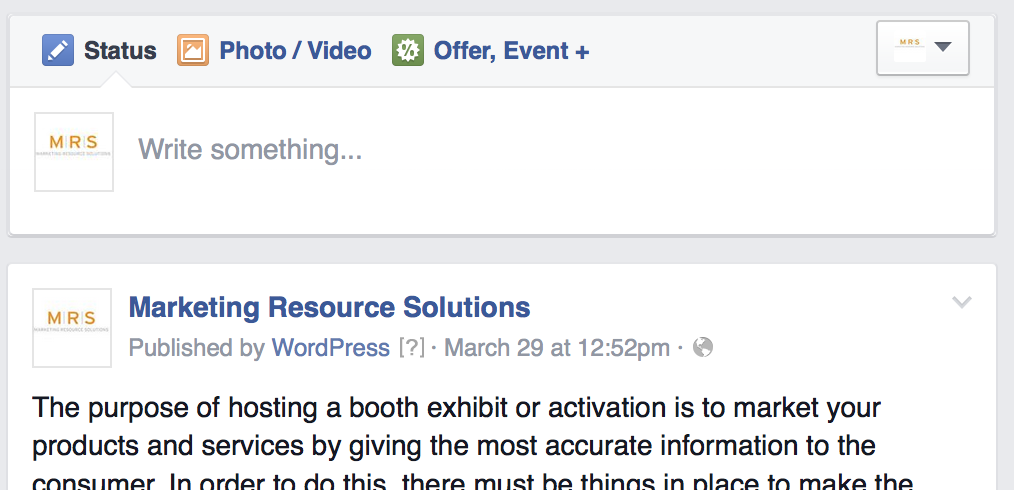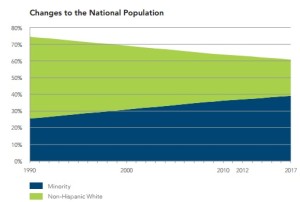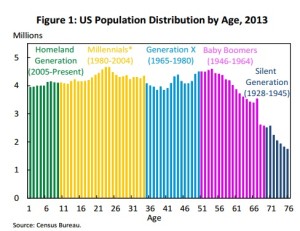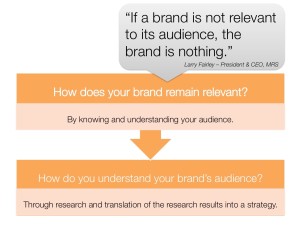Category Archives: News & Events
Top 2016 Trends In Hispanic Social Media
We recently read an article that was published earlier this year discussing some of the important elements to consider when building a Hispanic Social Media Strategy. According to the article, “Top 2016 Trends In Hispanic Social Media,” there are 26 million Hispanics on Facebook, 12 million on Twitter and 9.6 million on Instagram. These are some of the analytics that your brand can hone into to drive the social media campaign that is targeted to a Hispanic market. We’ve included some of the highlights of the article below.
- Insights and Analytics
- Drilling down into each segment of the Hispanic Market will provide the foundation for tailored marketing. Start with selecting your niche and go from there.
- Social Listening
- On the social media platform relevant to your target market segment, locate the conversations relative to your brand’s marketing goals in order to create relatable engagement with potential consumers.
- Content
- Accurate content creation, spread across your social and other media, will resonate more with your audience if it is genuine and relatable.
- Social Influences
- Tastemakers in the Hispanic community are excellent for representation of your brand as they will provide a feeling of inclusion and empowerment that drive consumers to your brand. Utilizing tastemakers displays that your brand is in support of the Hispanic community.
- Community Management
- Your front runner should be a leader that genuinely understands your intended market and knows how to properly engage the segment. This will build trust and loyalty once consumers see the authenticity in leadership.
Take a look at the following article to get a clearer understanding of how each of these elements will assist in driving your Hispanic marketing strategy:
http://www.mediapost.com/publications/article/270982/top-2016-trends-in-hispanic-social-media.html
Changing Demographics in the U.S. and How It Impacts Marketing
For several years, we have witnessed a seismic demographic shift in the U.S. population in which people of color – Latinos, African-Americans, Asians and other ethnic groups – are becoming the majority. In 1990, non-Hispanic whites made up 74.5 percent of the population. In 2010, they dropped to 63.75 percent of the population and 63.03 in 2012. And, they are expected to decrease to 60.9 percent by 2017. The chart below displays the increase in minority populations from 1990 through 2017 as well as the decrease in population of non-Hispanic whites.
Source: http://www.esri.com/library/brochures/pdfs/minority-population-growth.pdf
Also, we note that millennials have become the majority demographic, in terms of age, as there are over 75 million totaling 25 percent of the U.S. population1. Not only do they have strength in numbers but also their buying power has reached 1.3 trillion dollars. 2
Source: U.S. Census Bureau
What does this mean for brands, advertisers and marketers? With these demographic changes, brands must tailor their marketing to effectively reach these multicultural consumers. And, advertising and marketing agencies must craft the messaging that the brands need. In this space, we’re going to delve into more statistics and insights on multicultural markets and look at some of the strategies brands can deploy in order to stay relevant to these consumers.
1 https://www.census.gov/newsroom/press-releases/2015/cb15-113.html
2 http://www.leadscon.com/18-statistics-that-marketers-need-to-know-about-millennials/
Intro to MRS expertise in Multicultural Marketing
At Marketing Resource Solutions, our mission is to help our clients reach the diverse markets they serve by providing creative communication tools and programs via our strategic industry knowledge.
Based on our research1 some companies believe that a general market “one-size-fits-all” strategy is an effective way to reach multicultural markets. Just the opposite is true. It is a brand’s ability to understand the multicultural consumers’ experiences and cultural nuances that resonate with them and makes them more receptive to messages when they feel valued.
In order for brands to have a chance at success with these multicultural markets, they must be relevant to them. People only want to do business with brands that they deem relevant to their lives, their careers, and their interests.
Becoming relevant to consumers begins with understanding who they are, what they want, what they need, and what matters to them. By acquiring the necessary insights, both demographic and psychographic, and developing strategies gleaned from this research, brands can effectively reach their targeted multicultural markets through creative communication tools and programs.
Stay tuned to our blog in the upcoming weeks as we share some of the research and insights on multicultural consumers that we’ve uncovered.
1 Resilient, Receptive and Relevant: African American Consumer 2013
How To Know Your Event Was Successful
As an event planner, measuring your event success is necessary to gauge the quality of the event and the return on investment. Moving forward this will assist in improving future events by maintaining what worked and improve the elements attendees say could have been better.
Survey
Follow up with your guests via surveys to get an accurate depiction of attendee’s experiences. Survey’s should not take up much of your attendee’s time so you want to make sure you are asking the most efficient questions such as:
• How did you find out about the event?
• What did you like the venue?
• Would you attend this particular event again or another event by this company?
• How could this event be improved?
These questions can be measured on a scale of 1-10, however presenting space for attendees to expound on their answers will give your more insight to work with for future events. The quicker the survey is sent out the better so they can give the most accurate answers. By creating an event invitation or having a registration process, you will be able to capture email addresses to send the surveys.
Follow the Hashtag!
Many event planners that utilize social media for event promotion create a “hashtag.” On the social media networks Facebook, Instagram, and Twitter simply clicking on a hashtag will show all of the conversation surrounding the tag. You want to make the hashtag unique so that the conversation is strictly surrounding your event. Depending on the length of your event name you can create the hashtag based on that or use an abbreviated tag. Whichever you choose, remember to inform your attendees before, during, and, after the event to use the hashtag when discussing on social media. Hashtags are great because they do not expire therefore in addition to tracking the current event you can look back and compare it to a past event as well. Overall, by tracking the hashtag you will be able to see the brand impression increase through key metrics.
Press and Media coverage
If your event will have press and media coverage reviewing and archiving the footage is great for looking back on past events to expand on new ones. The coverage will allow you to see how your guests perceived the event. This will give you an in-depth look at the functionality of the space, points of interest, and how your event look as a whole. Interviews from attendees will let you know exactly how they felt and will also be great for footage for the web and internal purposes.
Happy Planning!
Promoting Your Event Through Social Media: The Fantastic Four
Social Media has revolutionized the way the world communicates with each other, providing different mediums to post content and connecting global individuals to meet in one space – directly, for free and in real time. It has proven itself to be one of the greatest tools businesses can utilize to build their brand, audience, and social reach. In the digital marketing realm, the usage of Facebook, Twitter, Instagram, and most recently Snapchat have connected businesses to consumers in very personal ways.
Consumers enjoy the ability to engage so closely with brands, so as an event planner, utilizing this closeness to your audience is key. Promoting events and increasing their awareness via social media must be built into the marketing plan if you anticipate having the optimum turnout.
Here we will provide some tips on how to utilize the top four social media platforms to engage your audience and draw larger crowds to your events.
Facebook
Facebook began as a website strictly for college students but after the news spread about how cool and innovative the website was, there was no other option but to open the site for everyone. Facebook now has 1 billion daily users and 894 million daily mobile users. Those numbers alone show the importance of utilizing Facebook as a promotional space.
“Events” functionality has been a component of Facebook since its earlier days and it has gone through many updates since its launch. To utilize this amazing feature, simply click on the “Events” link in the “post” window.

Under the events tab you can create a guest list, describe the event, add photos, and there is also an RSVP function. Individuals invited to the event will receive reminders of the event date unless they have the event notification tab turned off. Recently, Facebook added the ability for businesses to create business-only pages. These pages allow for direct communication with consumers–therefore advertising on your Facebook page is an option as well.
Twitter is microblogging at its finest. The creators of Twitter built the 140 character limit with creativity in mind; they wanted people to resort to wit and cleverness to get their message across in the shortest way possible. Twitter has incorporated many features into the site to optimize your event promotion. Attaching images, gifs, and videos will maximize the excitement around your event if you choose the right content for your audience. Twitter gives you just enough space to tweet the most important details of your event.
Instagram is a photo-sharing application – and what is there to lose by posting visual content to draw in a guest? In addition to photos, videos are now able to be uploaded. You can choose who can view your content: Your followers only (set the account type as “private” or anyone visiting your page on Instagram (set the account type on “public”).
Direct Messaging (DM): Another great feature of Instagram is the ability to send other users direct, private messages. In direct messaging on Instagram, a picture must be attached to the message. This allows businesses to reach out to people that may not use the app daily but still receive the message notification. The direct message function also reaches out to people who may have missed the initial posting.
Tagging: Instagram allows users to be “tagged” on photos and if their username is included in the caption, they will be notified of the post when they open the app.
Snapchat
Snapchat has become increasingly popular over the past two years, especially among younger Millennials. Snapchat is a photo and video sharing app that uploads in real time. Snapchat is good for leading up to an event by posting different elements such as the venue, production, and conversations about the event. In addition to pre-production, Snapchat is great for posting content during the event. Once people see how exciting your event is they may plan to participate next time. Snapchat really hones in on the closeness between the business and consumer because the consumer could end up on the business’ Snapchat in real time and consumers love that!
Cross-posting Saves Time
Each one of these platforms offer a unique ability to engage consumers and reel in a broader audience. The great thing about each application is that you can link them to post across platforms. The content you post on Instagram can be sent to Twitter and Facebook. The content you post on Twitter can be linked to Facebook.
To improve your efficiency, schedule your postings. There are several apps and websites that allow users to schedule posts across several social media platforms and accounts. The most popular among these is Hootsuite. Hootsuite allows you to schedule future posts to Facebook and Twitter saving you lots of time!
Why the Event Site Visit Matters!
When planning an event, securing the venue, catering and determining the approximate number of attendees are top factors of the process. However, acquiring the logistical components during a site visit will be the foundation for the success of your event.
A site visit is done to ensure the intended space is the best for your client’s event and to find out the capabilities and restrictions of that space. This checklist will guide you in the right direction in order to run a smooth event with avoidable hiccups.
•Parking available
Easily accessible parking will be a great perk for your event guests. If you are in the beginning stages of planning and have not secured your venue this is something guests will appreciate. If the venue does not have its own parking lot look for close street parking, parking decks, or other parking lots in close proximity.
•Dimensions of space(s)
Make sure that you take accurate measurements of areas that you plan to place displays or signage as this will be helpful when purchasing furniture, signage, and sharing the dimensions with your design team.
•Legal capacity
Capacity is a very important component in your planning process. During your site visit, you want to get the seated capacity numbers if there will be seating provided and also a standing capacity. After the site visit, you will want to create a plan for overflow traffic if the space reaches capacity.
•Restricted areas
Are there areas that are off limits? You want to find these areas that cannot be accessed by you or your client’s guests. If this affects the placement of equipment or signage make sure you clarify where these items may be positioned.
•Storage Areas
During the visit, it is imperative that a storage area be designated in order to confirm items will not be lost or stolen and that the equipment does not create an unsafe environment. If there is not a specific storage location, create a plan for a makeshift area to store all items. If the storage area is in a separate location from your event or exhibit, plan on how you will be getting your supplies to and from the storage to your exhibit.
•Loading docks/areas
Certain venues will have specific locations for loading and unloading equipment. For this, you must first decide whether you or your team will provide manual labor or will the exhibitor be responsible. If the exhibitor provides manual labor make sure you check the cost and analyze it against the budget.
•Move in/Move out times
Many venues have a minimum amount of hours a space can be rented. During this time, set aside the time for move in and move out. Remember to ask the fee for running over time. Knowing the move in and move out times will make you work more efficiently and guarantee that you meet your deadlines.
•Food preparation areas
You want to keep your client’s guests as safe as possible. Therefore, if catering is ordered, it is necessary to make sure food preparation and holding areas are available. To avoid the costs of having to buy food holding equipment secure a venue with these capabilities before booking. If this issue arises after the venue has been secured, work with the venue operators and caterers to create a food prepping area. In addition, some venues do not allow outside food at all, and some do not allow food to be distributed to guests therefore clarify this prior to securing the venue.
This checklist will provide you with the foundation for planning a solid event with little worries. Be sure to bring a list of questions, a notepad, and your imagination in order to maximize your impression!
Tips for Planning A Successful Event
Last year we gave you some event planning tips here and this time around we wanted to update you all with some new developments that personally helped us!
To some, event planning may seem like a simple job where all to be done is securing the venue and making sure there are enough refreshments for guests. Depending on the event you are planning those are two very important elements that must be secured, however, there is so much more to consider, especially for large scale events.
The number one key to event planning is remaining organized. You will work with many vendors and exhibitors and at times their duties will overlap. As a resilient planner you must be able to balance this heavy load in order to make deadlines, stay within budget, and reach your customers intended goal for the event.
When you are planning a large scale event it is likely you will receive a manual that extensively details rules, regulations, deadlines, third-party vendors, prices, and addresses. These manuals can be very long but it is necessary to thoroughly read and understand all of the information so that potential failures will be avoided. It is important to contact the exhibitor of the manual with specific questions to make sure you are following all the rules and regulations. As you plan, more questions will arise therefore anticipate having a consistent line of communication with your client and the exhibitor.
Your client is the number one priority when planning their event. At times they may be so heavily enthralled with preparing for their event that things may slip their mind. It is imperative that you understand all factors involved so that you can constantly remind your client of important factors and deadlines. This will reduce their stress when they see you are capable of managing their event under pressure. To stay on top of deadlines we suggest having a visual checklist for you to view daily. This will ensure that you commit dates to memory and do not forget! At times mandatory deadlines can affect price and shipping times which are high on the list of importance, highlighting these items in your unique fashion will maintain your organization efficiency.
With these tips you are well on your way to developing a successful event that showcases your expertise as a planner and communicates the goal your client intends to send.
Gearing Up for Great Events!
Aaah, Spring is around the corner, the weather is warmer and the days are getting longer. Here at Marketing Resource Solutions those are the signs that we’re gearing up for our Spring and Summer client event activations and getting ready to hit the road! Our upcoming events have been strategically planned to afford our clients the maximum return for their activations. We have analyzed their markets and carefully planned activities that best serve their clientele. We will be traveling the country, meeting new people, making sure each of their events goes as planned.
We kick off our journey with The Tom Joyner Fantastic Voyage Cruise. This is our third year aboard the Party With A Purpose and each year gets better than the last. Each year to prepare for the cruise, we review the previous year’s activation and work hard to exceed that. We want to make the passengers feel like celebrities so we ensure they have all the components in place to make their sailing adventure a memorable experience!
We’ll also be back at the BETX (The BET Experience) for our second year with one of our major clients. We plan to bring a bigger and better experience for everyone to enjoy. Our main activation at BETX brings together family, friends, and fun making a huge impact for our client. We reach out to over 100,000 people giving them an unforgettable experience which keeps them on the lookout for us each year.
Follow our journey here and across our other social media networks for updates, photos, and exciting moments from our upcoming events.
Social Media Reset
We’re back guys! After a brief hiatus, we are relaunching our social media presence to keep you informed and updated on all the exciting and creative activities that are happening in our shop. We will take you into our world to explore all the services we offer, including multicultural marketing, faith-based marketing, event management, and community outreach solutions.
Our clients are our number one priority and we make sure we meet their needs as well of those of their audiences. We extend their reach to the audiences that they seek by creating unique brand experiences through creative communication and marketing strategies.
In this space, we will discuss insights we have gleaned from our research, our current projects, event highlights, industry trends and hot topics, our successes, and in moments of transparency, we’ll revisit curve balls in order to better handle them on the next pass.
We hope you will stay around, post your comments below, and engage in some spirited conversation with us!



